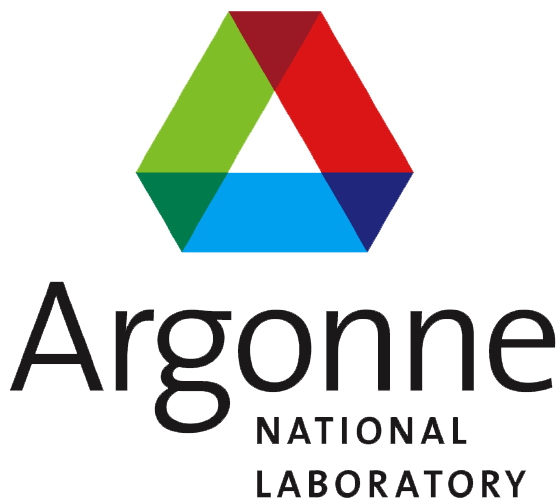Testing and Debugging Archetypes¶
Overview¶
Writing unit tests for your module is a prerequisite for its addition to any Cyclus library, but it’s really a good idea anyway.
Cyclus makes use of the Google Test framework. The primer is recommended as an introduction to the fundamental concepts of unit testing with Google Test. Seriously, if you’re unfamiliar with unit testing or Google Test, check out the primer.
Unit Tests Out of the Box¶
The Cyclus dev team provides a number of unit tests for free (as in beer). Really! You can unit test your archetype immediately to confirm some basic functionality with the cyclus kernel. We provide basic unit tests for any class that inherits from one of:
cyclus::Agentcyclus::Facilitycyclus::Institutioncyclus::Region
Note that cyclus::Agent is the base class for any object that acts as an
agent in the simulation, so every archetype can invoke those unit tests.
In order to get the provided unit tests in your archetype’s tests, a few extra
lines must be added to your *_tests.cc file. For instance, the
TutorialFacility in the Hello, Cyclus! [C++] example with the file structure
outline in Building Modules with CMake adds the following lines to
tutorial_facility_tests.cc to get all of the free cyclus::Agent and
cyclus::Facility unit tests:
#include "tutorial_facility.h"
#include "facility_tests.h"
#include "agent_tests.h"
#ifndef CYCLUS_AGENT_TESTS_CONNECTED
int ConnectAgentTests();
static int cyclus_agent_tests_connected = ConnectAgentTests();
#define CYCLUS_AGENT_TESTS_CONNECTED cyclus_agent_tests_connected
#endif // CYCLUS_AGENT_TESTS_CONNECTED
cyclus::Agent* TutorialFacilityConstructor(cyclus::Context* ctx) {
return new TutorialFacility(ctx);
}
INSTANTIATE_TEST_CASE_P(TutorialFac, FacilityTests,
::testing::Values(&TutorialFacilityConstructor));
INSTANTIATE_TEST_CASE_P(TutorialFac, AgentTests,
::testing::Values(&TutorialFacilityConstructor));
The above lines can be specialized to your case by replacing TutorialFac with
an appropriate moniker (anything that uniquely identifies your unit test
name). Also, if you’re subclassing from cyclus::Institution or
cyclus::Region, replace all instances of facility in the above example with
the institution or region, respectively.
Unit Test Example¶
Now we will provide an example of a very simple archetype that keeps
track of how many ticks it has experienced. We’ll call it
TickTracker.
This tutorial assumes that you have a directory setup like that described in Hello, Cyclus! [C++], namely that there is a src directory in which archetype source files are housed and a install.py file that will install them on your system.
Make a file called tick_tracker.h in the src directory that has the
following lines:
#include "cyclus.h"
class TickTracker : public cyclus::Facility {
public:
TickTracker(cyclus::Context* ctx);
#pragma cyclus
/// increments n_ticks
virtual void Tick();
/// no-op
virtual void Tock() {};
/// query now many ticks the agent has experienced
inline int n_ticks() const {return n_ticks_;}
private:
int n_ticks_;
};
Next, make a file called tick_tracker.cc in the src directory that has the
following lines:
#include "tick_tracker.h"
// we have to call the base cyclus::Facility class' constructor
// with a context argument
TickTracker::TickTracker(cyclus::Context* ctx) : n_ticks_(0), cyclus::Facility(ctx) {};
// tick experienced!
void TickTracker::Tick() {n_ticks_++;}
Now, make a file called tick_tracker_tests.cc in the src directory that
has the following lines:
// gtest deps
#include <gtest/gtest.h>
// cyclus deps
#include "facility_tests.h"
#include "agent_tests.h"
#include "test_context.h"
// our deps
#include "tick_tracker.h"
// write a unit test of our own
TEST(TickTracker, track_ticks) {
cyclus::TestContext ctx;
TickTracker fac(ctx.get());
EXPECT_EQ(0, fac.n_ticks());
fac.Tick();
EXPECT_EQ(1, fac.n_ticks());
fac.Tick();
EXPECT_EQ(2, fac.n_ticks());
}
// get all the basic unit tests
#ifndef CYCLUS_AGENT_TESTS_CONNECTED
int ConnectAgentTests();
static int cyclus_agent_tests_connected = ConnectAgentTests();
#define CYCLUS_AGENT_TESTS_CONNECTED cyclus_agent_tests_connected
#endif // CYCLUS_AGENT_TESTS_CONNECTED
cyclus::Agent* TickTrackerConstructor(cyclus::Context* ctx) {
return new TickTracker(ctx);
}
INSTANTIATE_TEST_CASE_P(TicTrac, FacilityTests,
::testing::Values(&TickTrackerConstructor));
INSTANTIATE_TEST_CASE_P(TicTrac, AgentTests,
::testing::Values(&TickTrackerConstructor));
Add the following lines to the src/CMakeLists.txt file:
INSTALL_CYCLUS_STANDALONE("TickTracker" "tick_tracker" "tutorial")
Now we’re ready to install the TickTracker module and run its tests. If you
haven’t already, now is a good time to add the $CYCLUS_INSTALL_PATH to your
PATH environment variable (Cyclus’ install.py defaults to
~/.local). Next, from your top level directory (where your install.py
file is), run:
$ ./install.py
$ TickTracker_unit_tests
Which results in:
[==========] Running 8 tests from 3 test cases.
[----------] Global test environment set-up.
[----------] 1 test from TickTracker
[ RUN ] TickTracker.track_ticks
[ OK ] TickTracker.track_ticks (19 ms)
[----------] 1 test from TickTracker (20 ms total)
[----------] 5 tests from TicTrac/AgentTests
[ RUN ] TicTrac/AgentTests.Clone/0
[ OK ] TicTrac/AgentTests.Clone/0 (8 ms)
[ RUN ] TicTrac/AgentTests.Print/0
[ OK ] TicTrac/AgentTests.Print/0 (9 ms)
[ RUN ] TicTrac/AgentTests.Schema/0
[ OK ] TicTrac/AgentTests.Schema/0 (9 ms)
[ RUN ] TicTrac/AgentTests.Annotations/0
[ OK ] TicTrac/AgentTests.Annotations/0 (15 ms)
[ RUN ] TicTrac/AgentTests.GetAgentType/0
[ OK ] TicTrac/AgentTests.GetAgentType/0 (8 ms)
[----------] 5 tests from TicTrac/AgentTests (49 ms total)
[----------] 2 tests from TicTrac/FacilityTests
[ RUN ] TicTrac/FacilityTests.Tick/0
[ OK ] TicTrac/FacilityTests.Tick/0 (9 ms)
[ RUN ] TicTrac/FacilityTests.Tock/0
[ OK ] TicTrac/FacilityTests.Tock/0 (8 ms)
[----------] 2 tests from TicTrac/FacilityTests (17 ms total)
[----------] Global test environment tear-down
[==========] 8 tests from 3 test cases ran. (86 ms total)
[ PASSED ] 8 tests.
Testing Resource Exchange¶
One of the most important things to test is your archetype’s resource exchange behavior. Does it request/receive the right kinds of material? Does it offer/sell resources at the right time? One of the best ways to test this is to actually run a simulation with your archetype. Cyclus comes with a mock simulation environment that makes it easy to write these kinds of tests in a way that works well with gtest.
MockSim is a helper for running full simulations entirely in-code without
having to deal with input files, output database files, and other pieces of
the full Cyclus stack. All you have to do is initialize a MockSim indicating
the archetype you want to test and the simulation duration. Then add any
number of sources and/or sinks to transact with your agent. They can have
specific recipes (or not) and their deployment and lifetime (before
decommissioning) can be specified too. Here is an example using the
agents:Source archetype in Cyclus as the tested agent:
// Define a composition to use as a simulation recipe.
cyclus::CompMap m;
m[922350000] = .05;
m[922380000] = .95;
cyclus::Composition::Ptr fresh = cyclus::Composition::CreateFromMass(m);
// Define our archetype xml configuration.
// This is the info that goes
// "<config><[archetype-name]>here</[archetype-name]></config>"
// in the input file.
std::string config =
"<commod>enriched_u</commod>"
"<recipe_name>fresh_fuel</recipe_name>"
"<capacity>10</capacity>";
// Create and run a 10 time step mock simulation
int dur = 10;
cyclus::MockSim sim(cyclus::AgentSpec(":agents:Source"), config, dur);
sim.AddRecipe("fresh_fuel", fresh); // with one composition recipe
sim.AddSink("enriched_u") // and one sink facility
.recipe("fresh_fuel") // requesting a particular recipe
.capacity(5) // with a 5 kg per time step receiving limit
.Finalize(); // (don't forget to call this for each source/sink you add)
sim.AddSink("enriched_u") // And another sink facility
// requesting no particular recipe
// and with infinite capacity
.start(3) // that isn't built until the 3rd timestep.
.Finalize();
int agent_id = sim.Run(); // capture the ID of the agent being tested
The parameters that can be set (or not) for each source/sink are:
recipe(std::string r): The recipe to request/provide. Default is none - sources provide requested material, sinks take anything.capacity(double cap): The per time step throughput/capacity limit for the source/sink. Default is infinite.start(int t): Time the source/sink is initially built. Default is time step zero.lifetime(int): The number of time steps the source/sink is deployed until automatic decommissioning. Default is infinite (never decommissioned).
For more details, you can read the MockSim API docs. Querying simulation results can be accomplished by getting a reference to the in-memory database generated. Not all data that is present in normal full-stack simulations is available. However, most of the key core tables are fully available. Namely the Transactions, Composition, Resources, ResCreators, AgentEntry, and AgentExit tables are available. Any custom-tables created by the tested archetype will also be available. Here is a sample query and test you might write using the gtest framework:
// return all transactions where our source facility is the sender
std::vector<cyclus::Cond> conds;
conds.push_back("SenderId", "==", agent_id);
cyclus::QueryResult qr = sim.db().Query("Transactions", &conds);
int n_trans = qr.rows.size();
EXPECT_EQ(10, n_trans) << "expected 10 transactions, got " << n_trans;
// reconstruct the material object for the first transaction
int res_id = qr.GetVal<int>("ResourceId", 0);
cyclus::Material::Ptr m = sim.GetMaterial(res_id);
EXPECT_DOUBLE_EQ(10, m->quantity());
// confirm composition is as expected
cyclus::toolkit::MatQuery mq(m);
EXPECT_DOUBLE_EQ(0.5, mq.mass(922350000));
EXPECT_DOUBLE_EQ(9.5, mq.mass(922380000));
You can read API documentation for the queryable database and query results for more details.
Debugging¶
If exceptions are being thrown when you try to use your archetype in
simulations, you can turn off Cyclus’ main exception handling/catching by
setting the environment variable CYCLUS_NO_CATCH=1 when you run cyclus.
This will prevent exceptions from being caught resulting in a core-dump. You
can then use a debugger (e.g. gdb or lldb) to run the failing simulation and
investigate the source of the crash in more detail. Something like this:
$ CYCLUS_NO_CATCH=1 gdb --args cyclus my-failing-sim.xml
GNU gdb (GDB) 7.11
Copyright (C) 2016 Free Software Foundation, Inc.
...
(gdb) run
...
Cyclus has the ability to dump extra information about a simulation run’s
resource exchange into the database. This information can be
particularly helpful for debugging and verifying your archetype’s behavior
with respect to resource exchange. To turn on this debugging, simply run
cyclus with the environment variable CYCLUS_DEBUG_DRE set to any non-empty
value:
$ CYCLUS_DEBUG_DRE=1 cyclus my-sim.xml
The database will then contain two extra tables with several columns each:
DebugRequests: record of every resource request made in the simulation.
SimId: simulation UUIDTime: time step of the requestReqId, simulation-unique identifier for this requestRequesterID: ID of the requesting agentCommodity: the commodity of the requestPreference: agent’s preference for this particular requestExclusive: true (non-zero) if this request is all-or-nothing (integral)ResType: resource type (e.g. “Material”, “Product”)Quantity: amount of the requestResUnits: units of the request (e.g. kg)
DebugBids: record of every resource bid made in the simulation.
SimId: simulation UUIDReqId: simulation-unique identifier for the bid’s requestBidderId: ID of the the bidding agentBidQuantity: amount of thd bidExclusive: true(non-zero) if this request is all-or-nothing (integral)
Note that some information about bids can be inferred from corresponding requests. A bid’s time, commodity, resource type, and units are all identical to those of the corresponding request.





